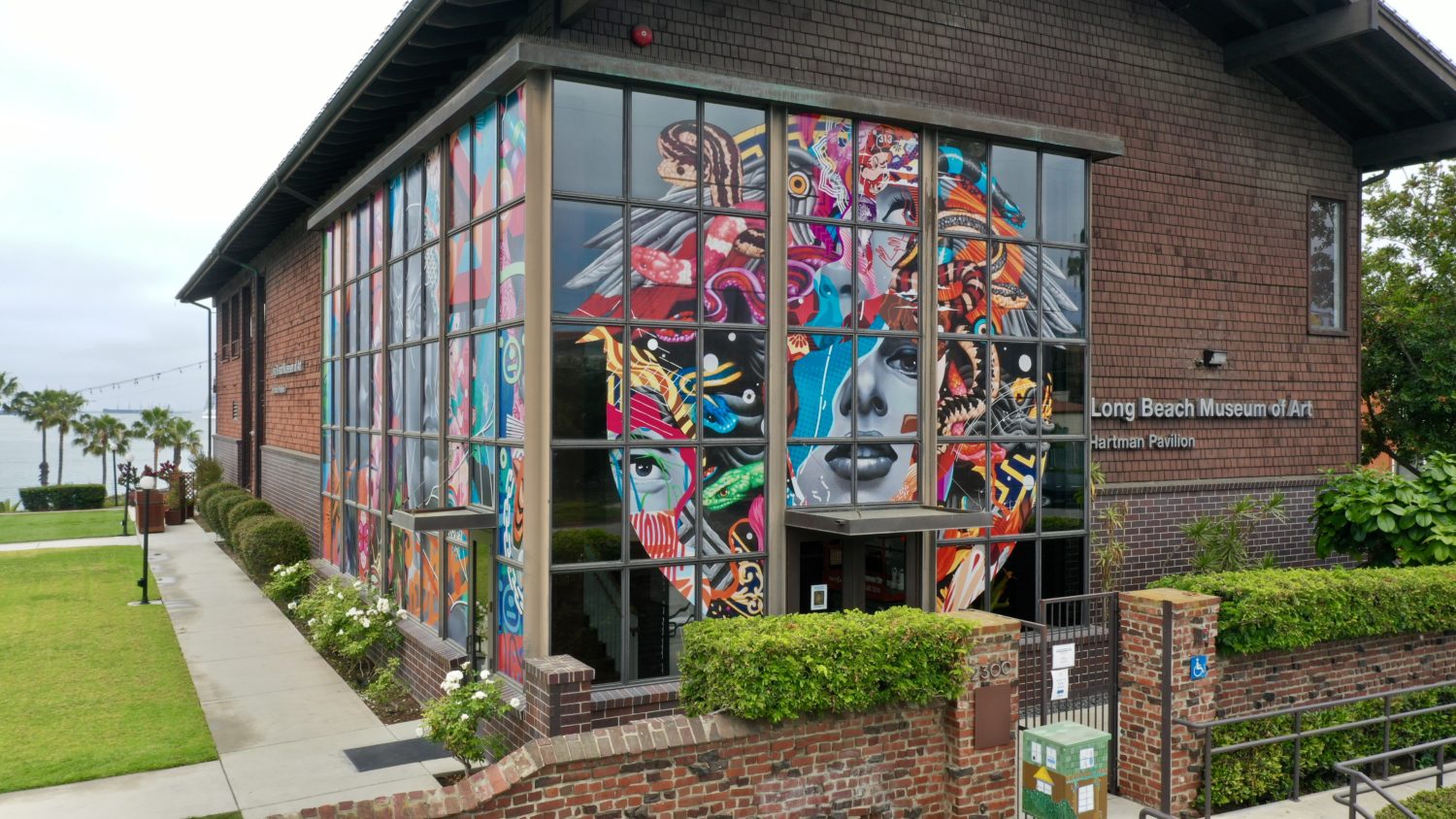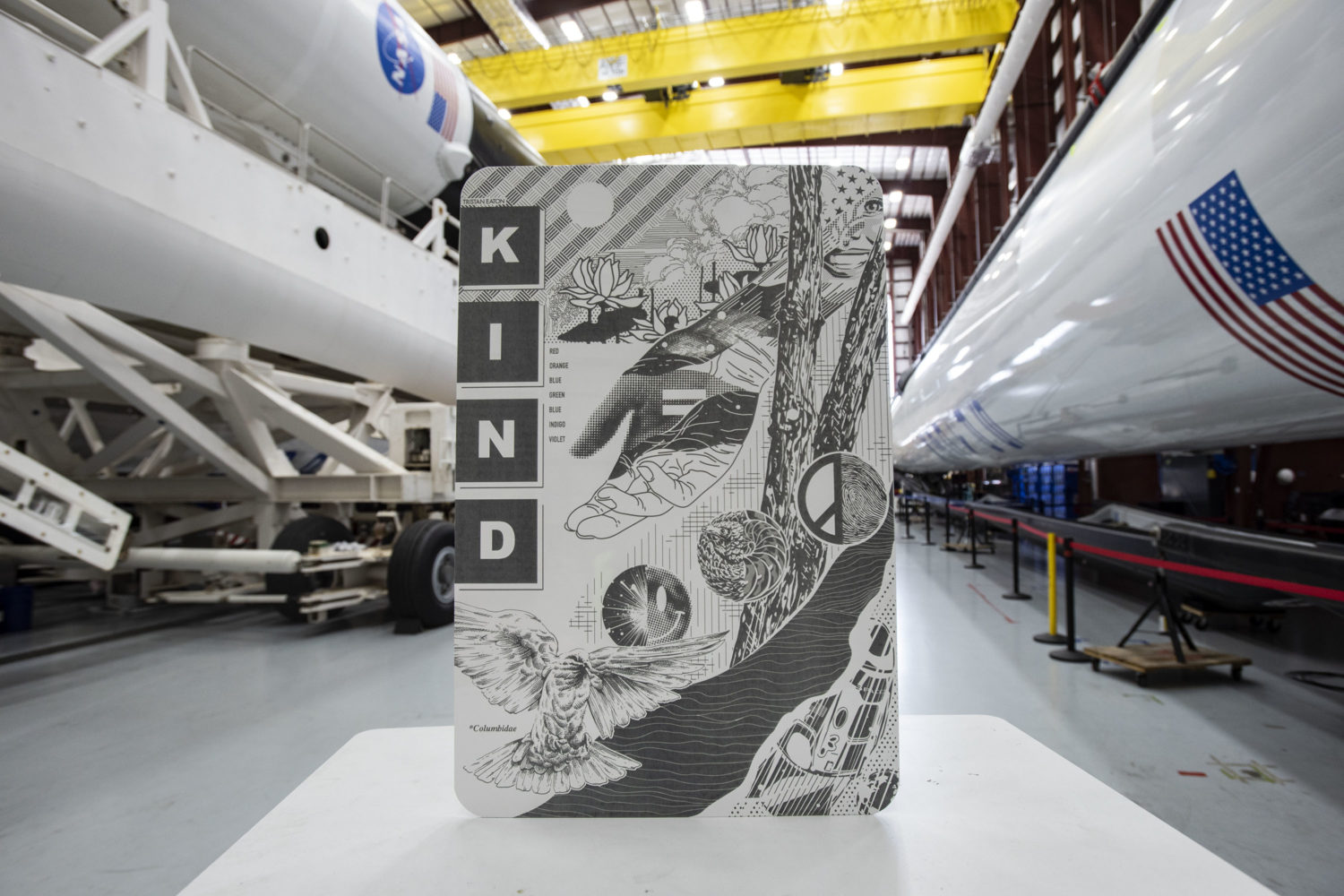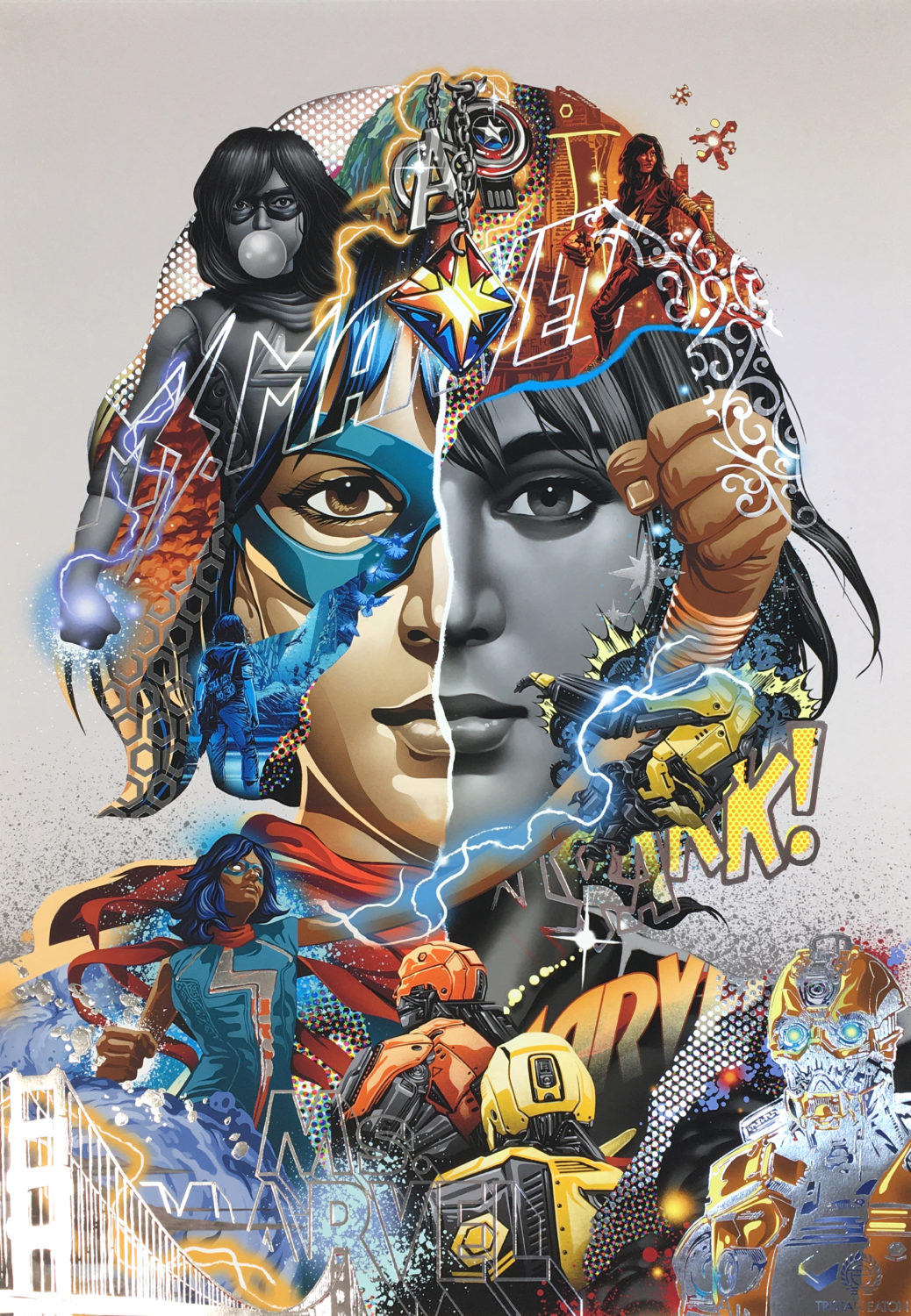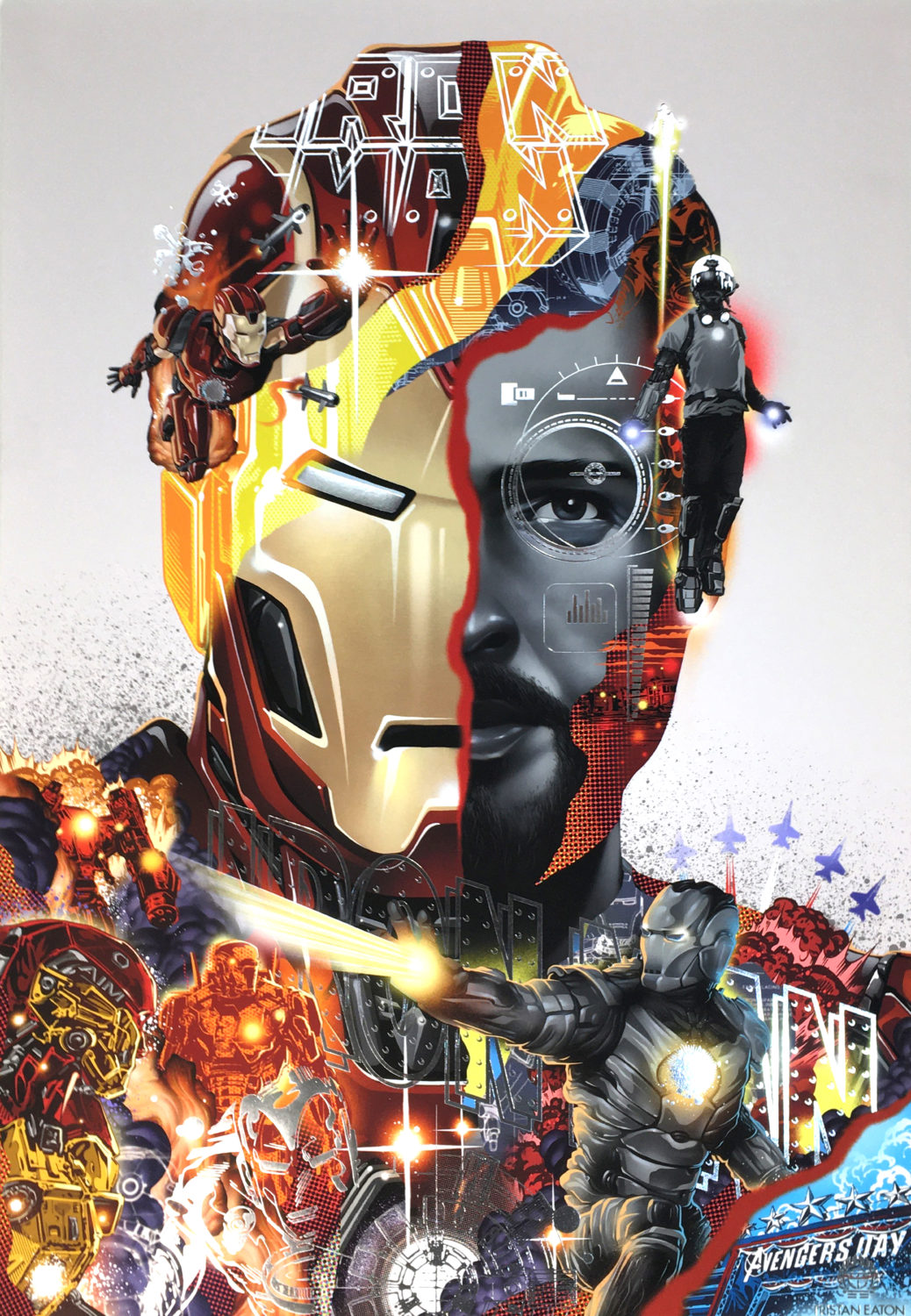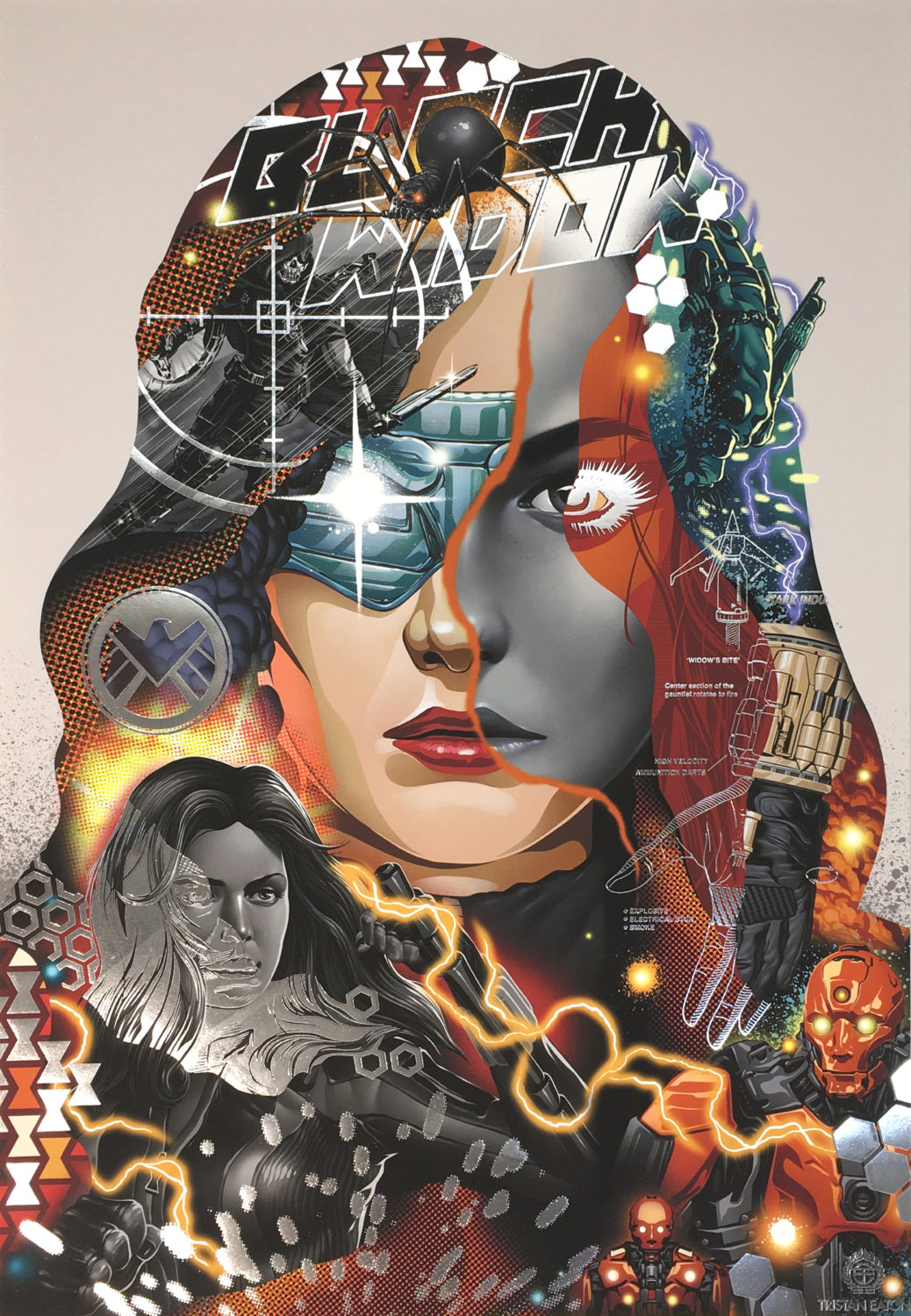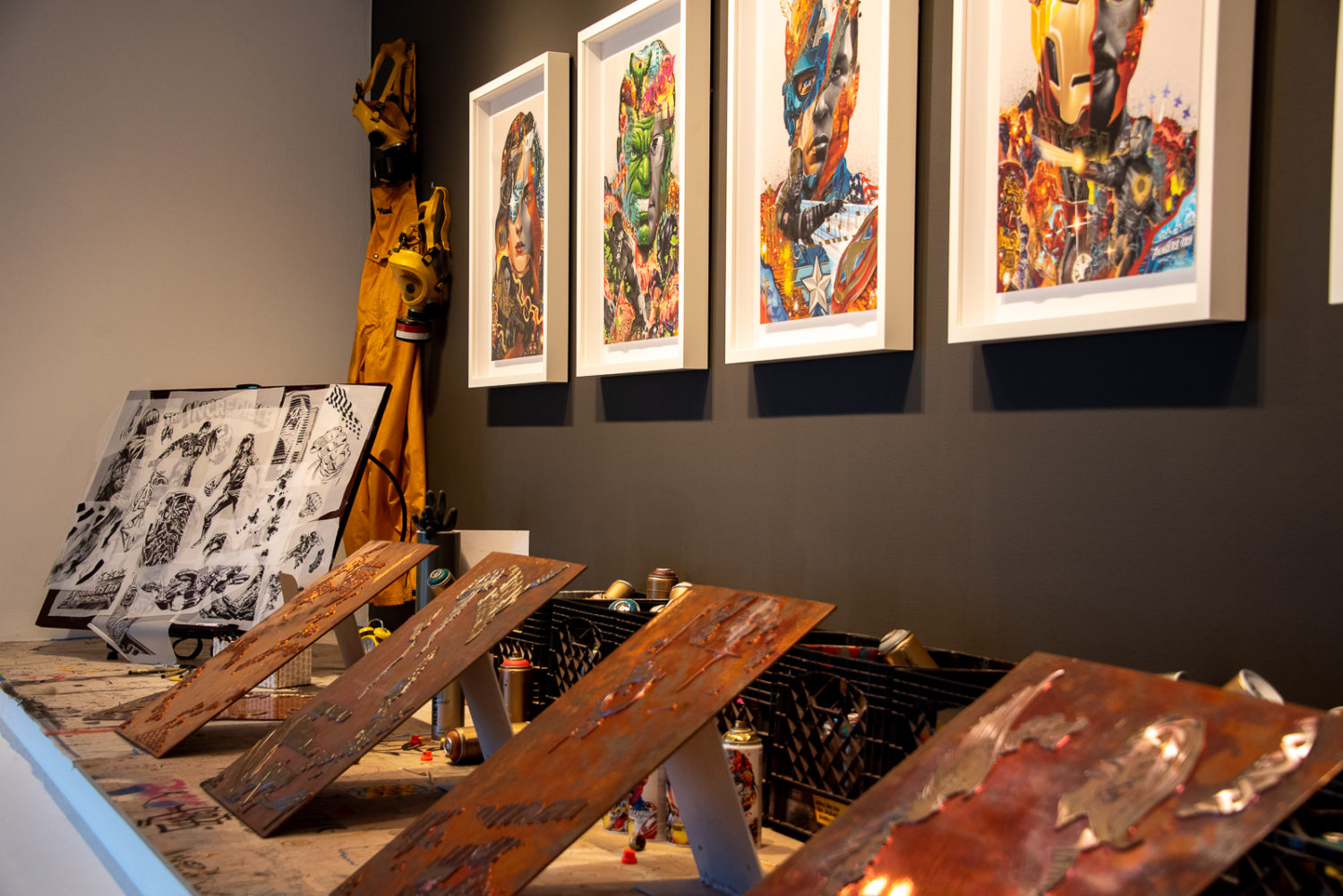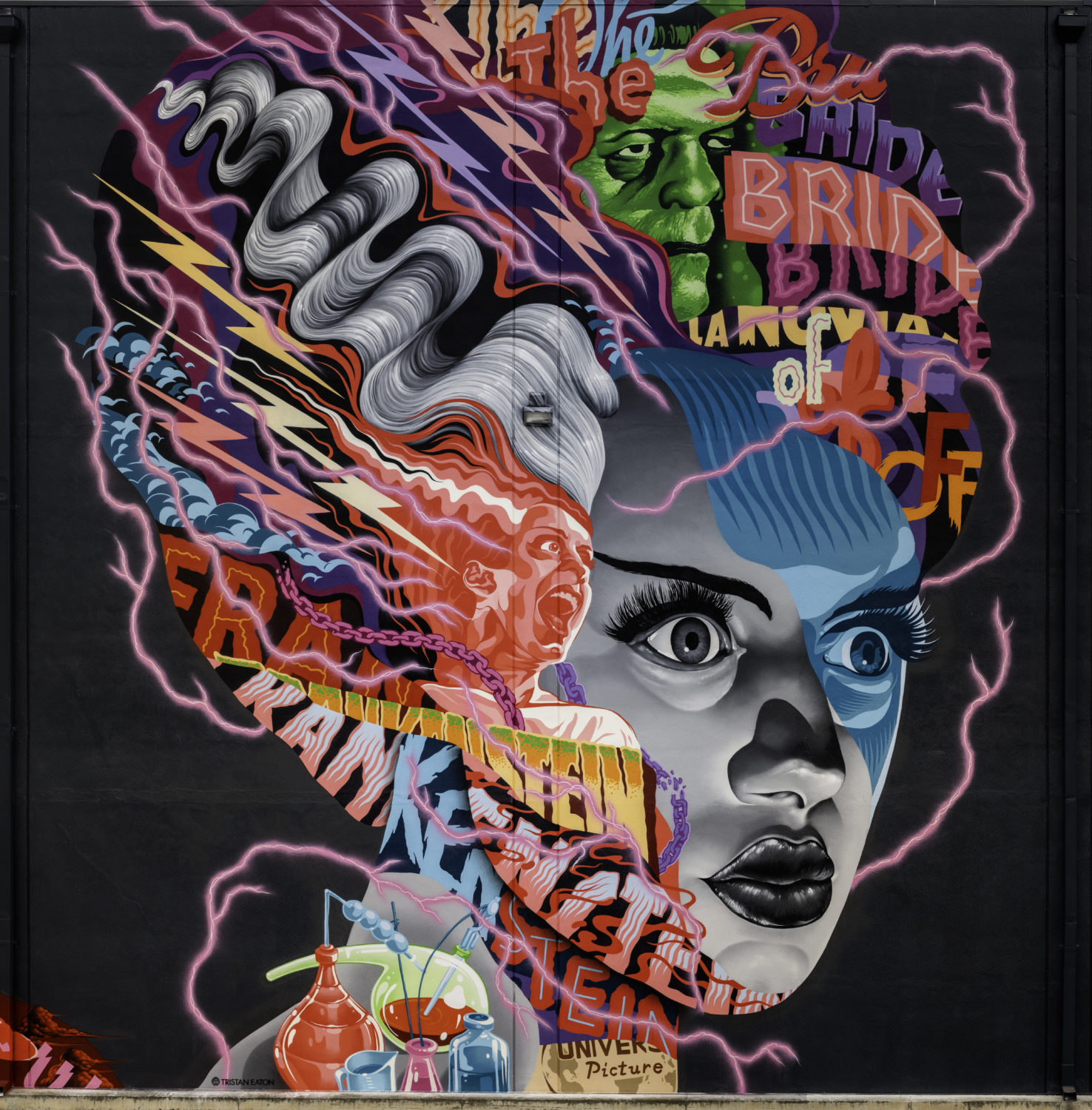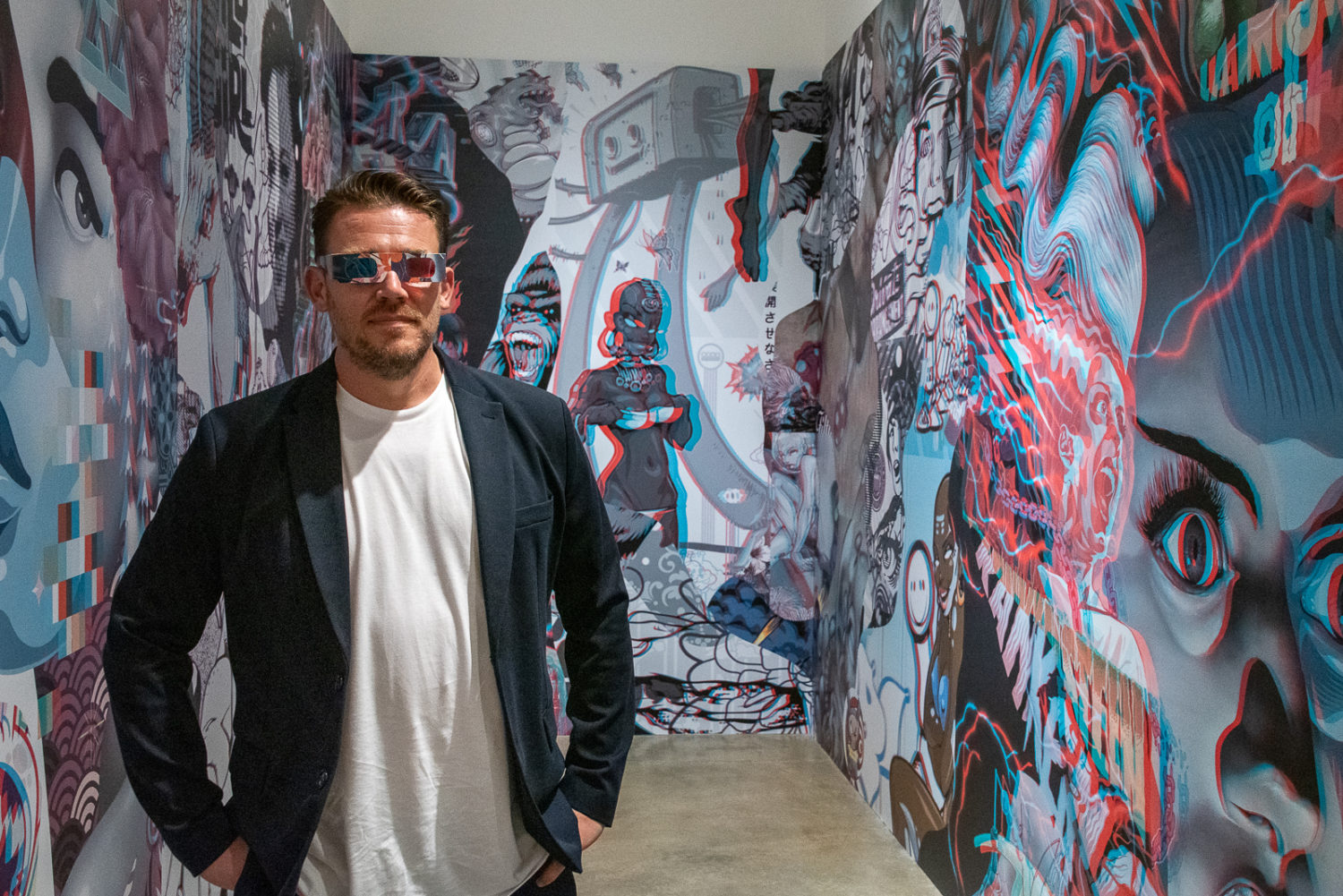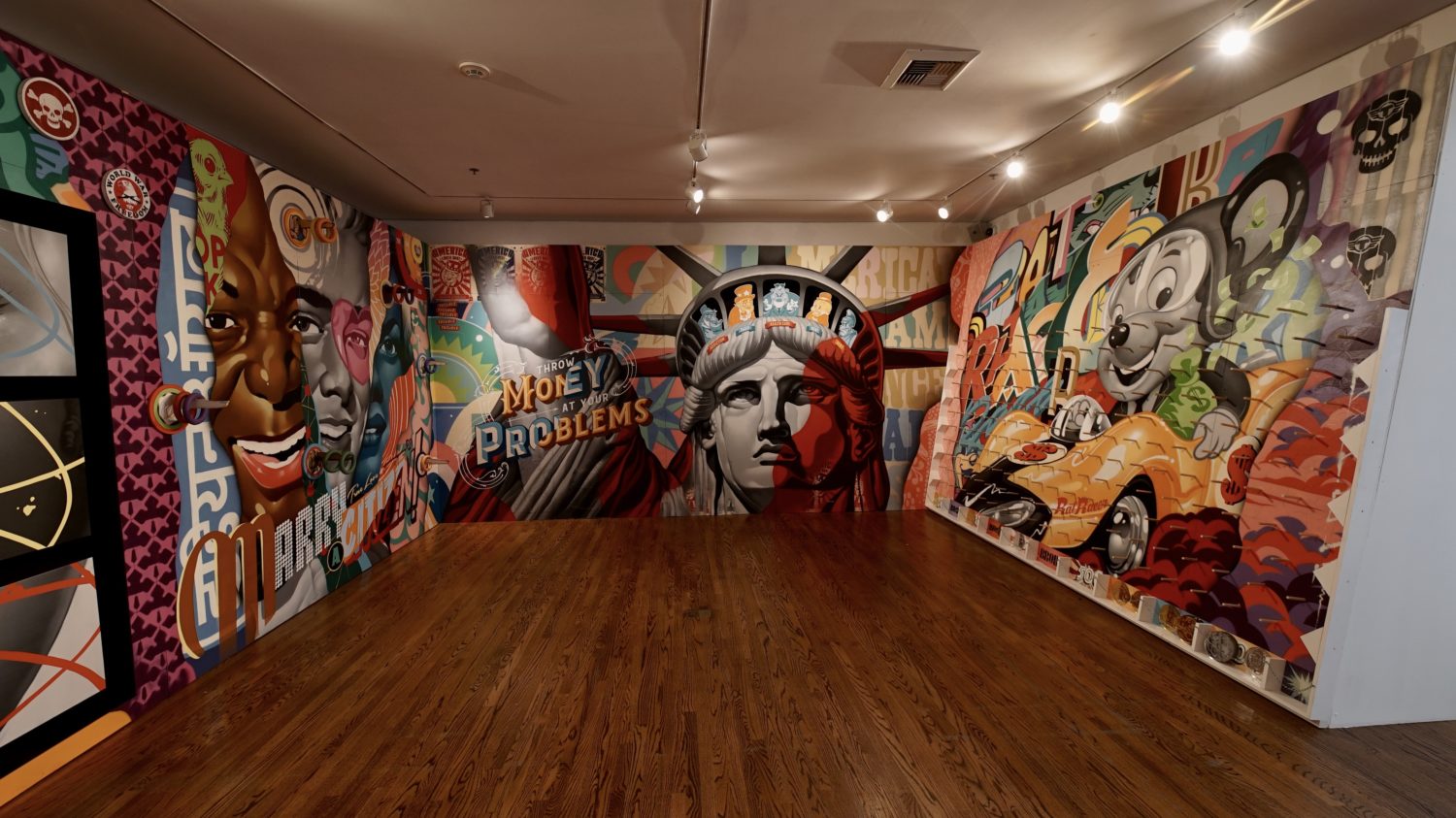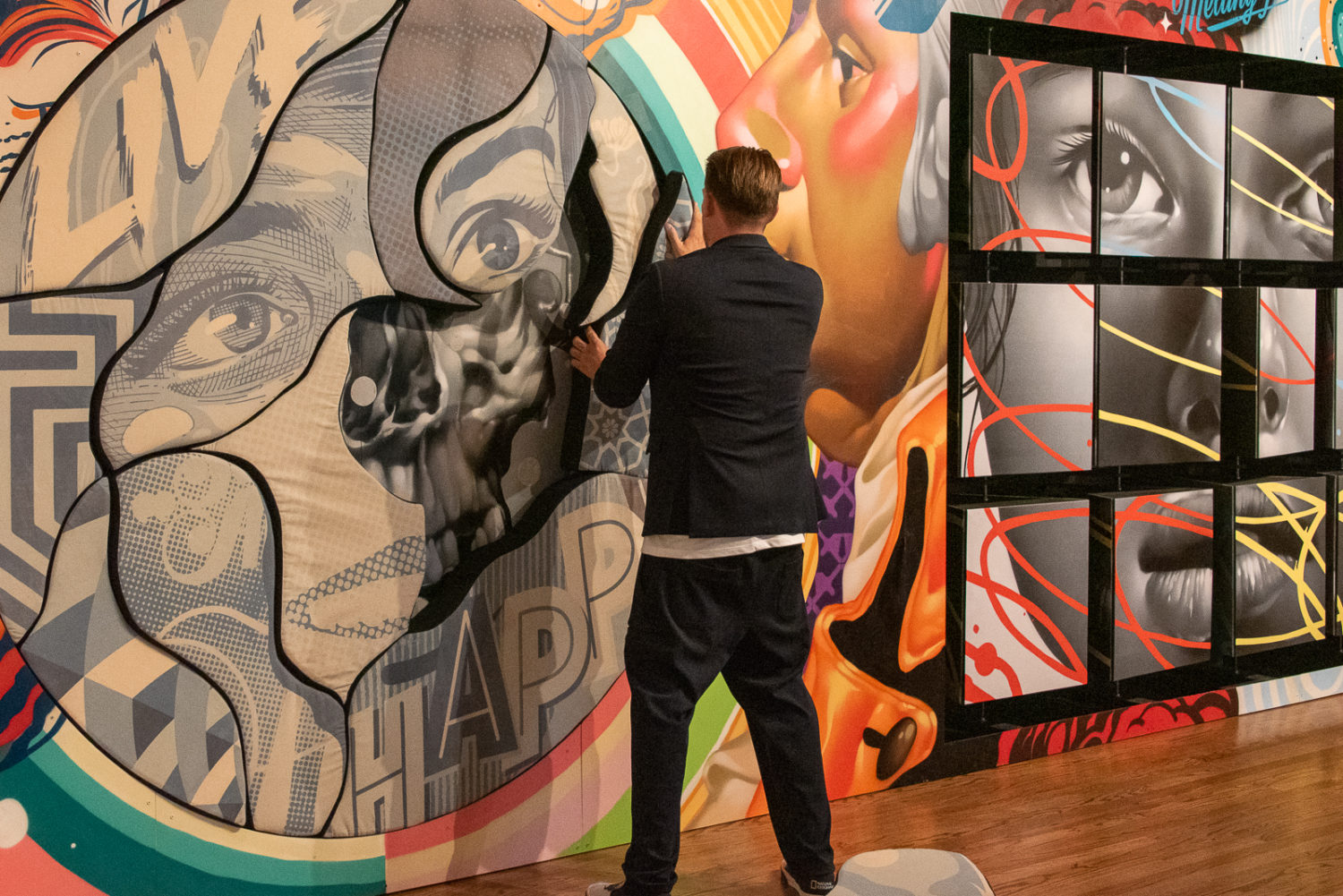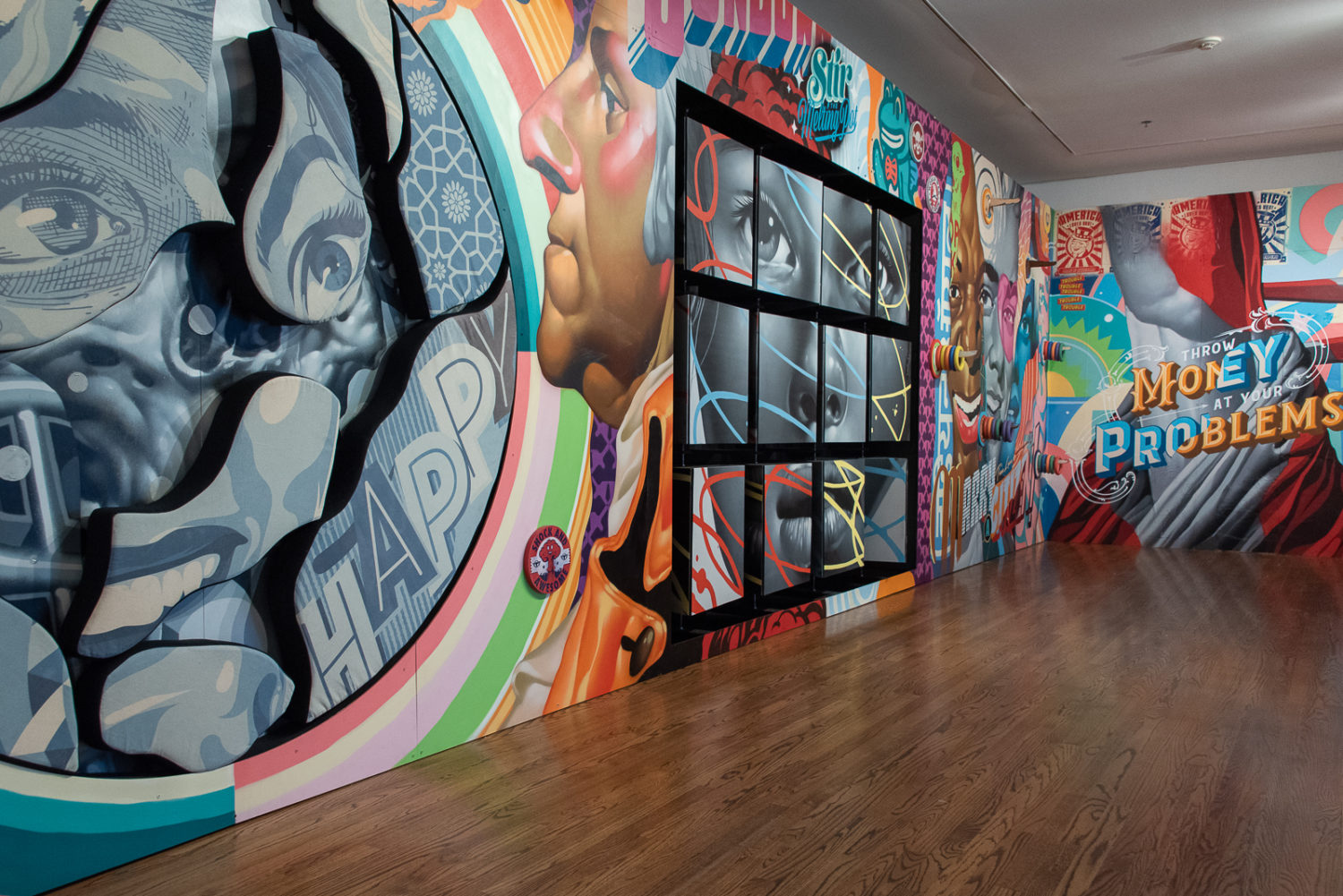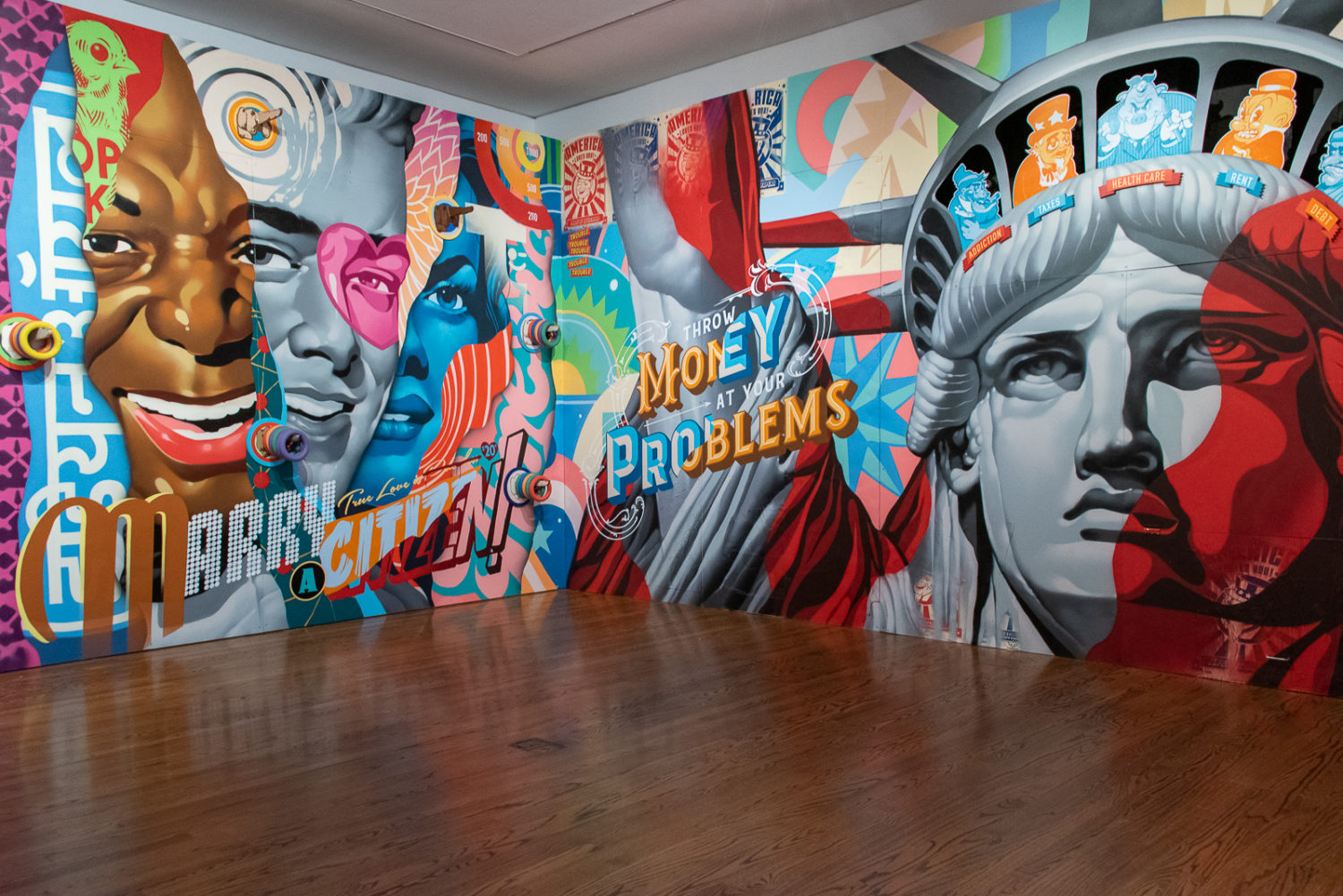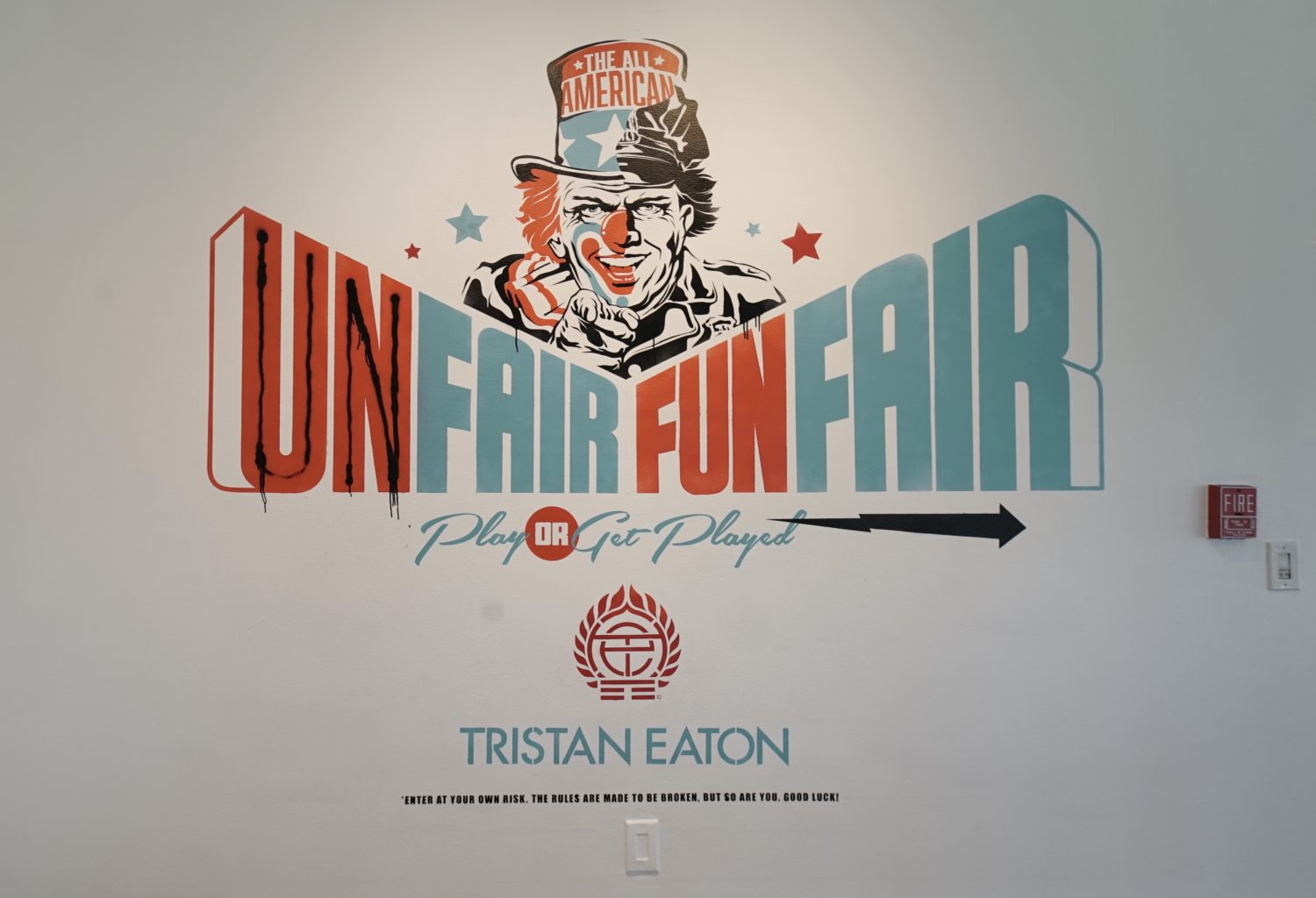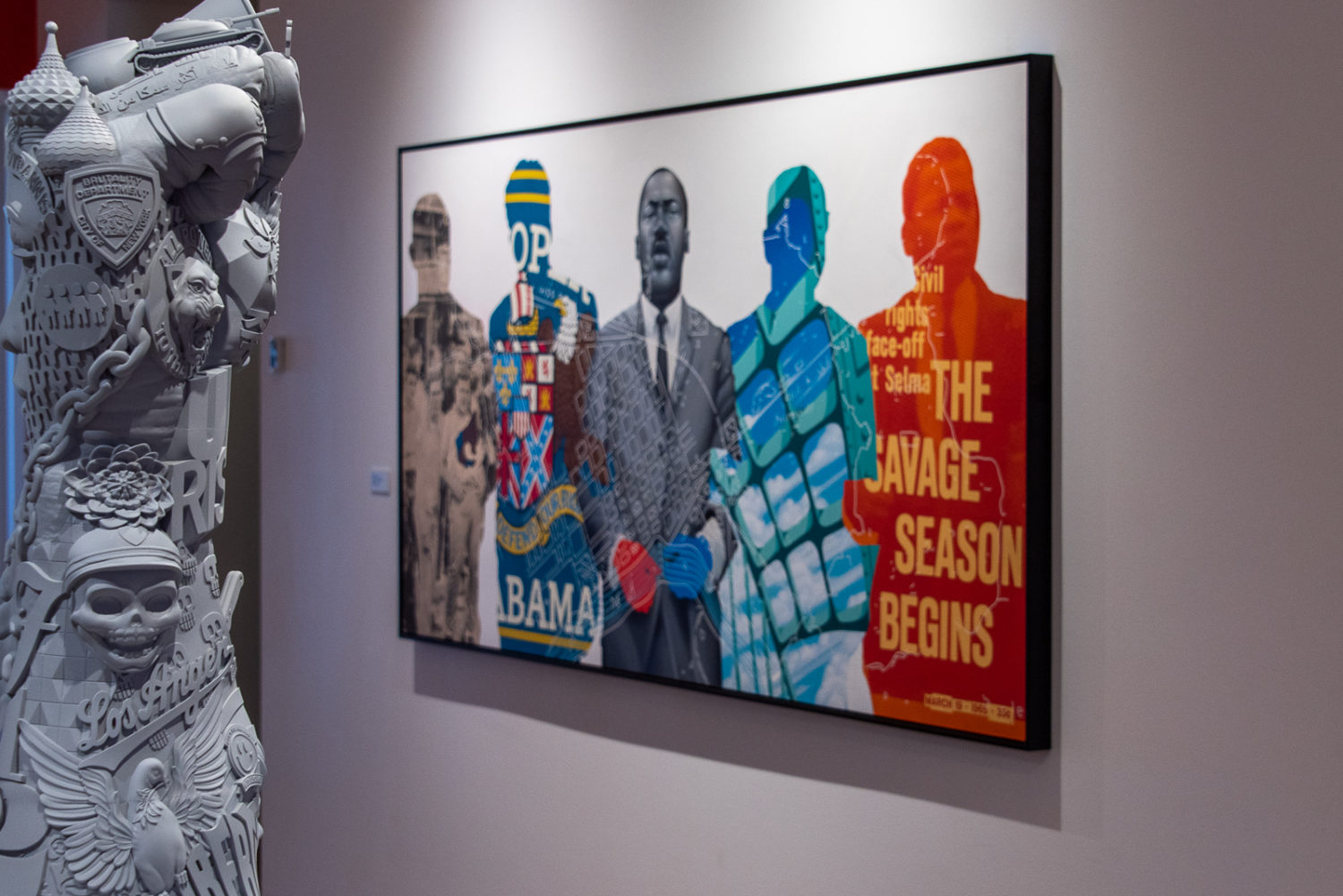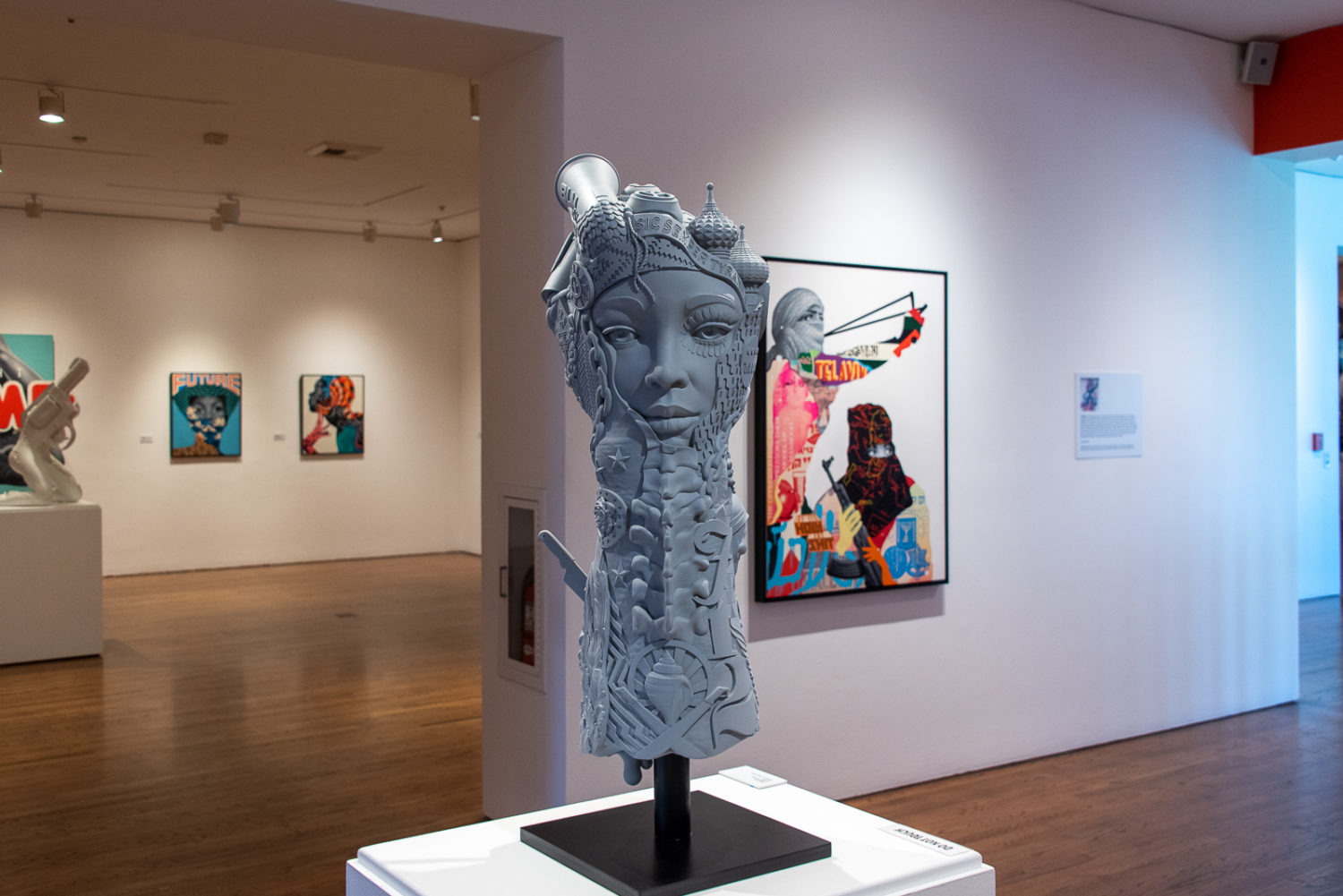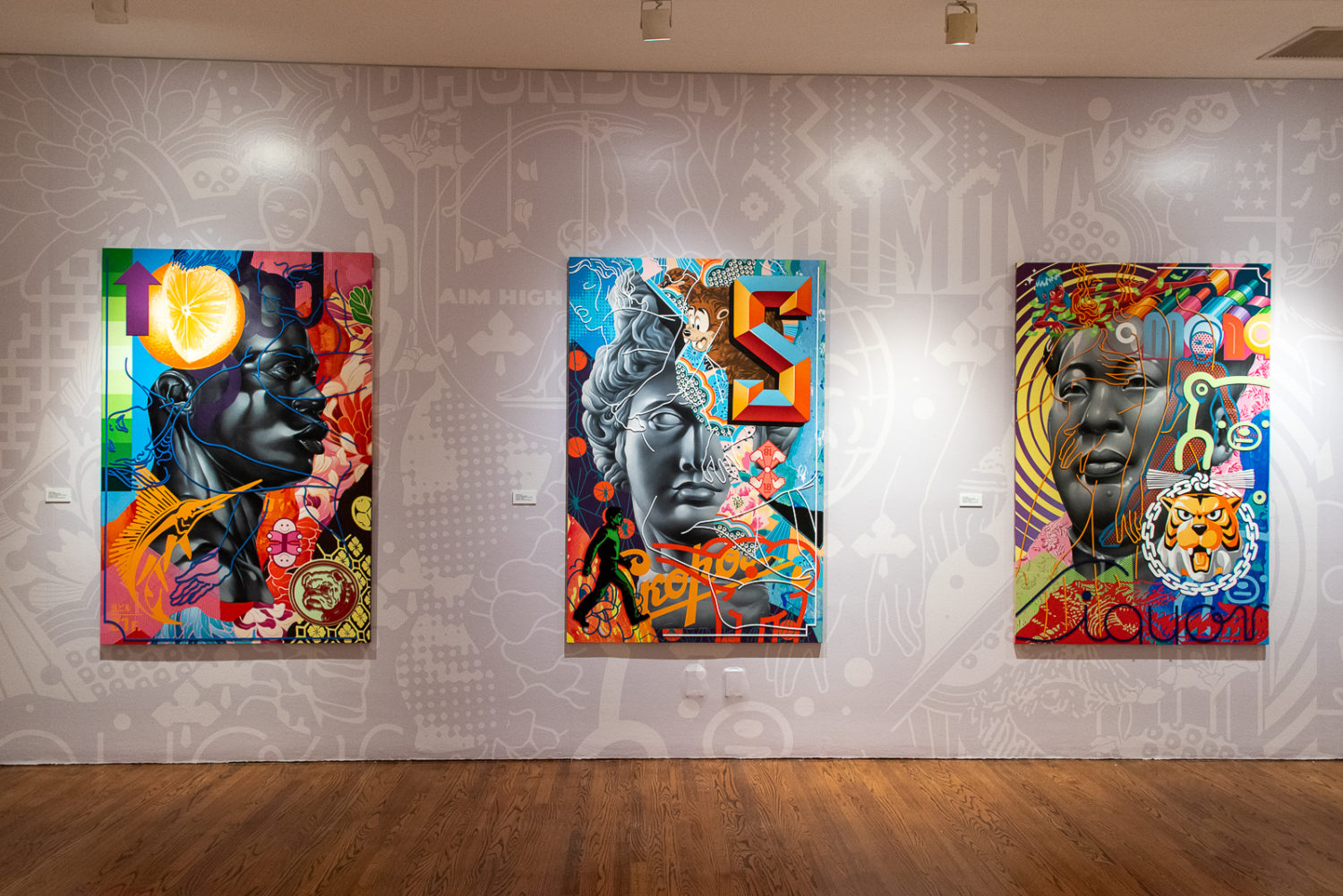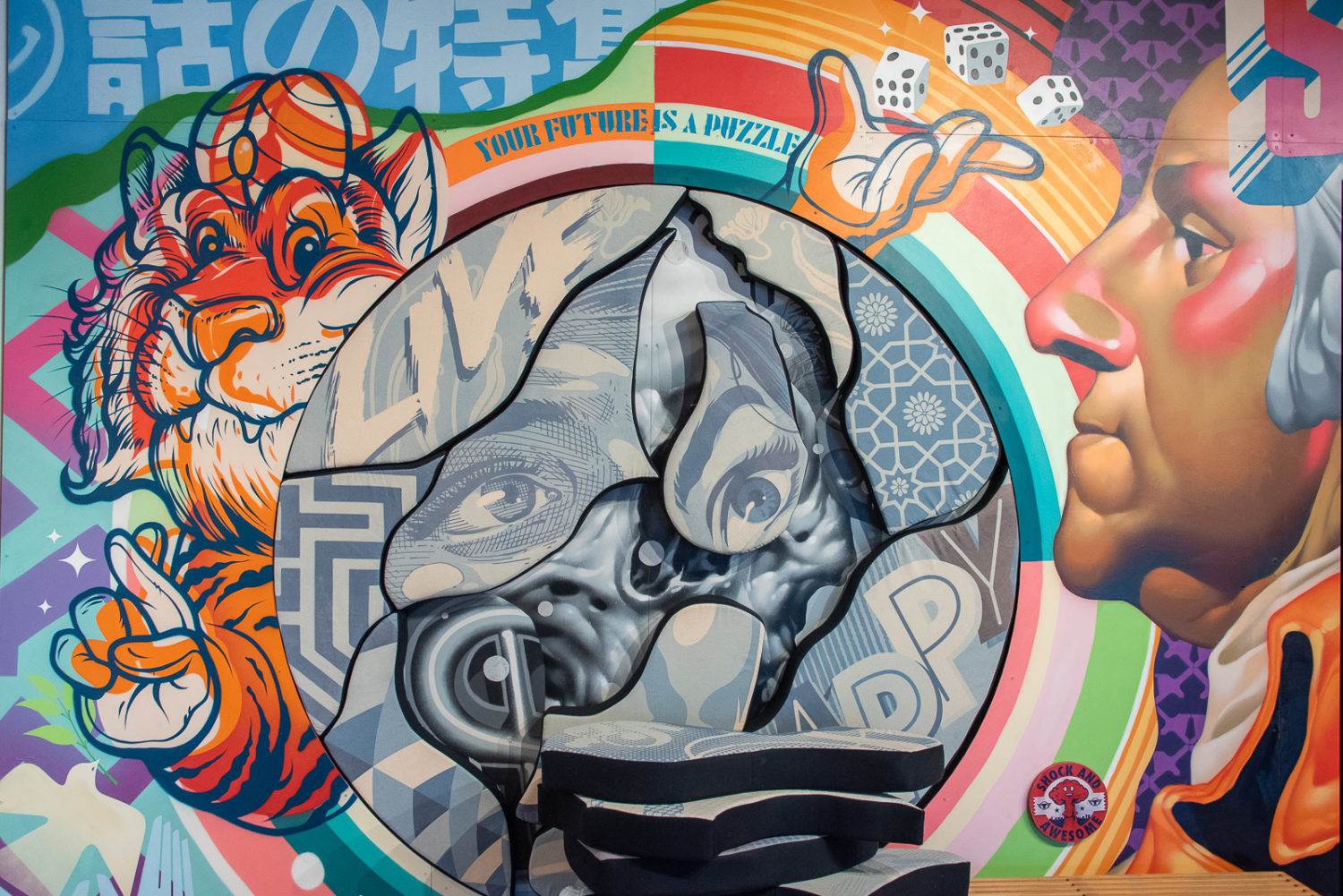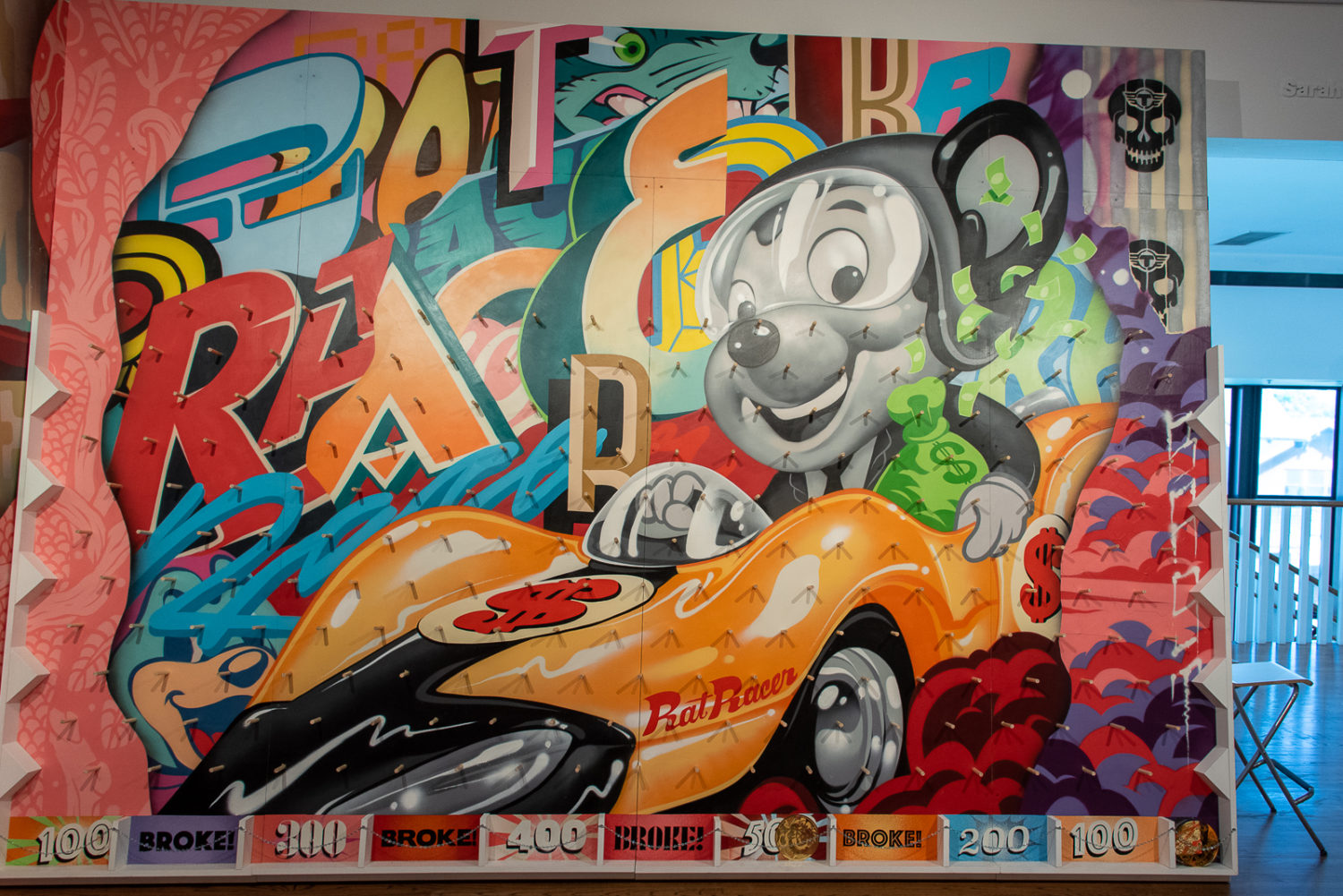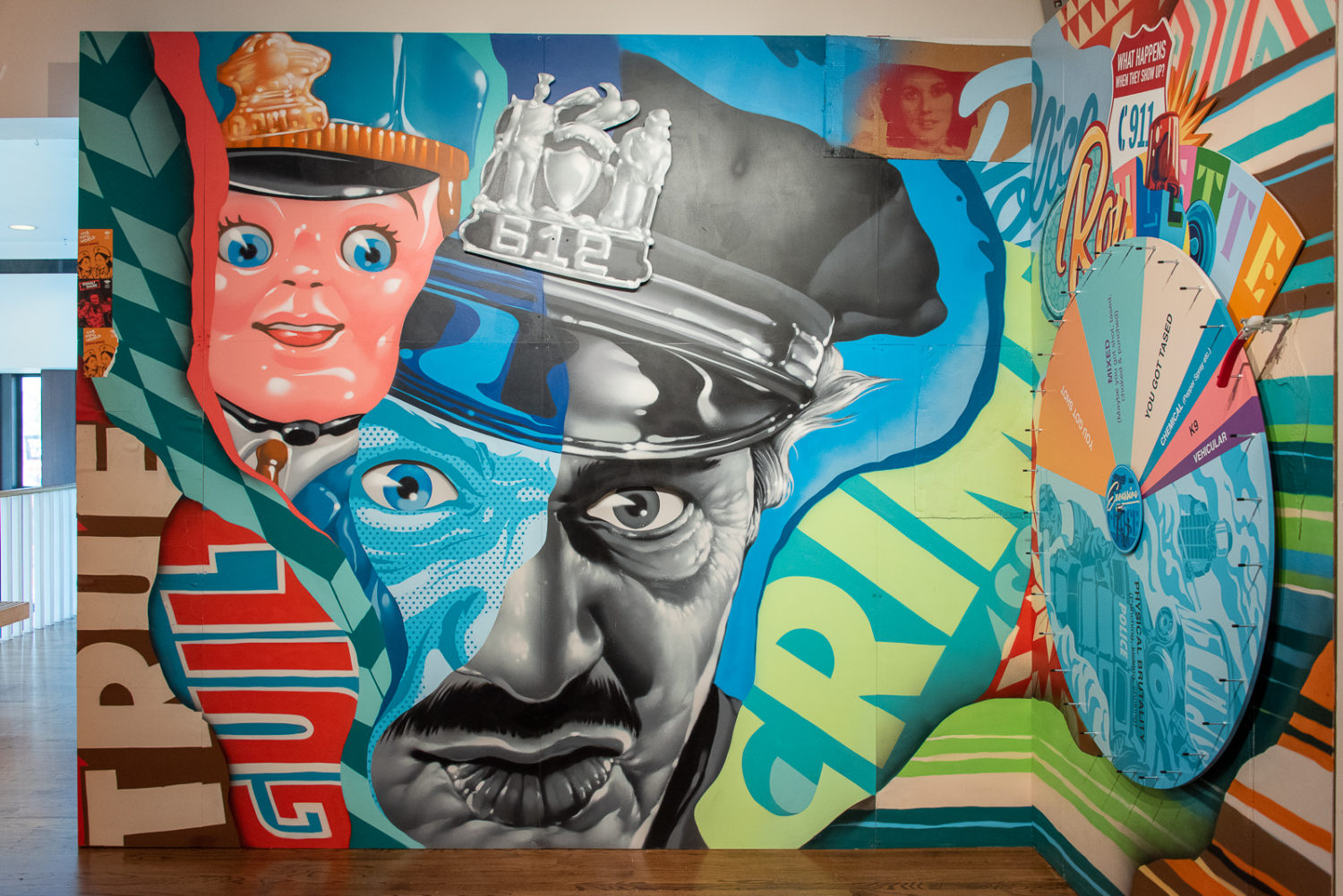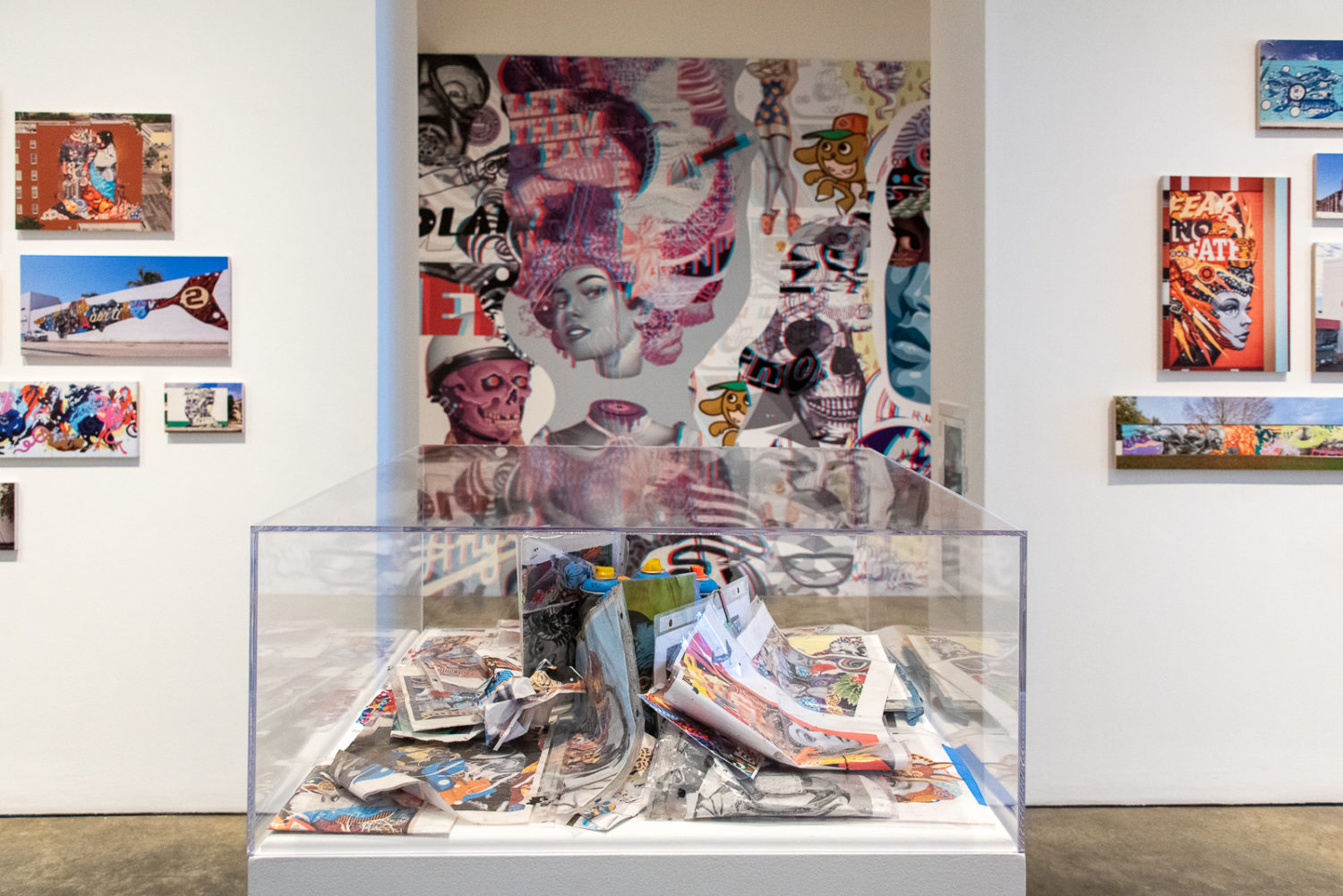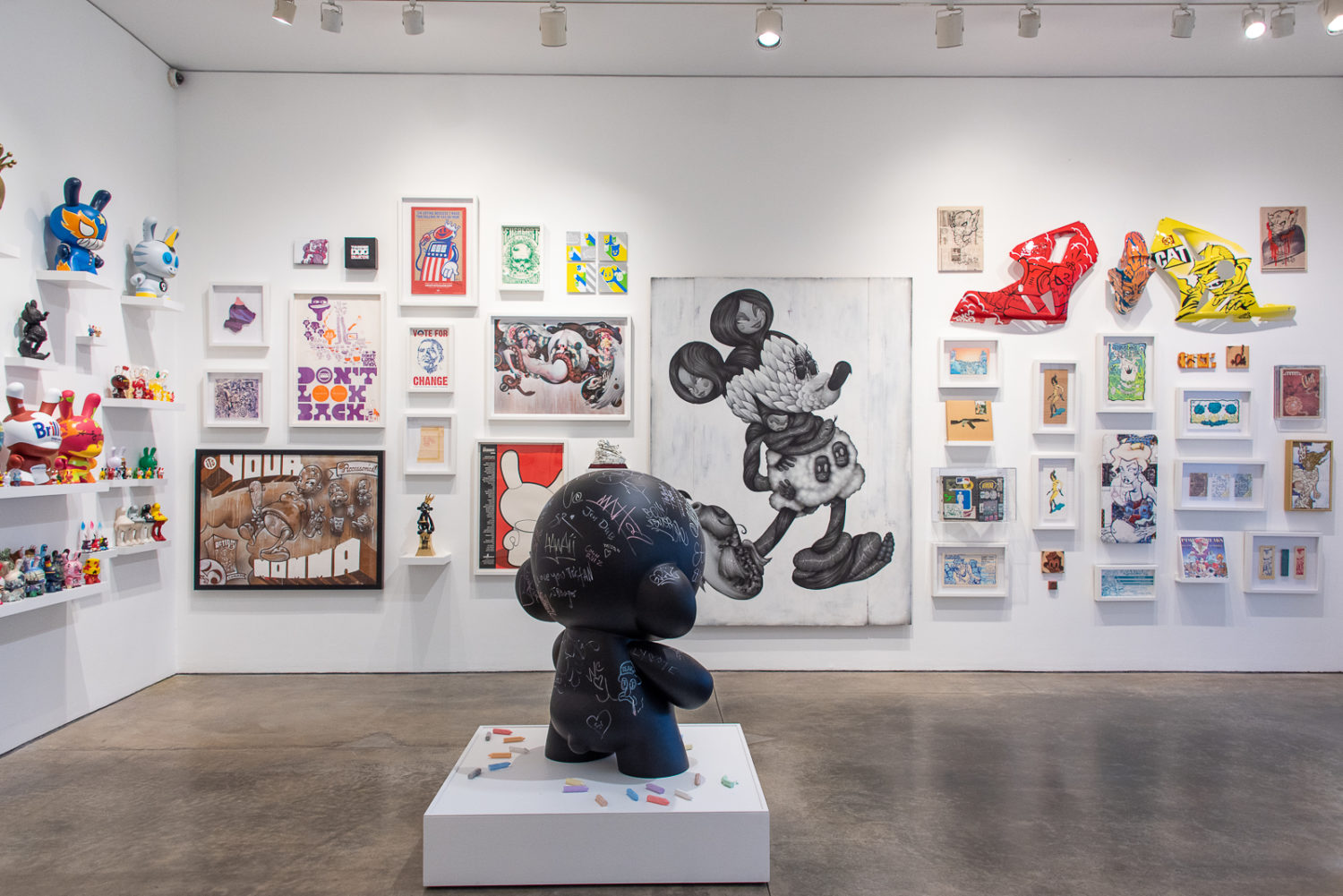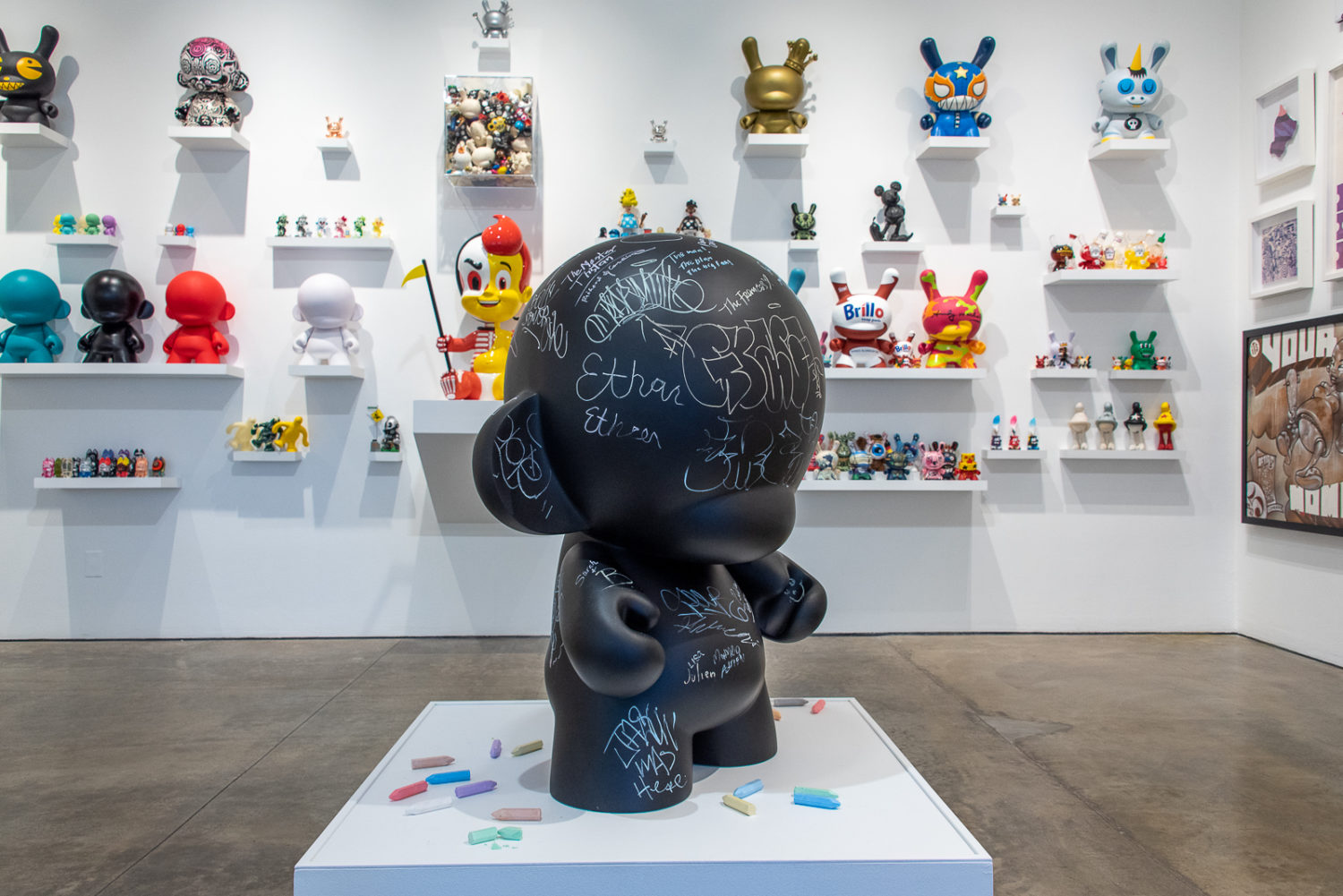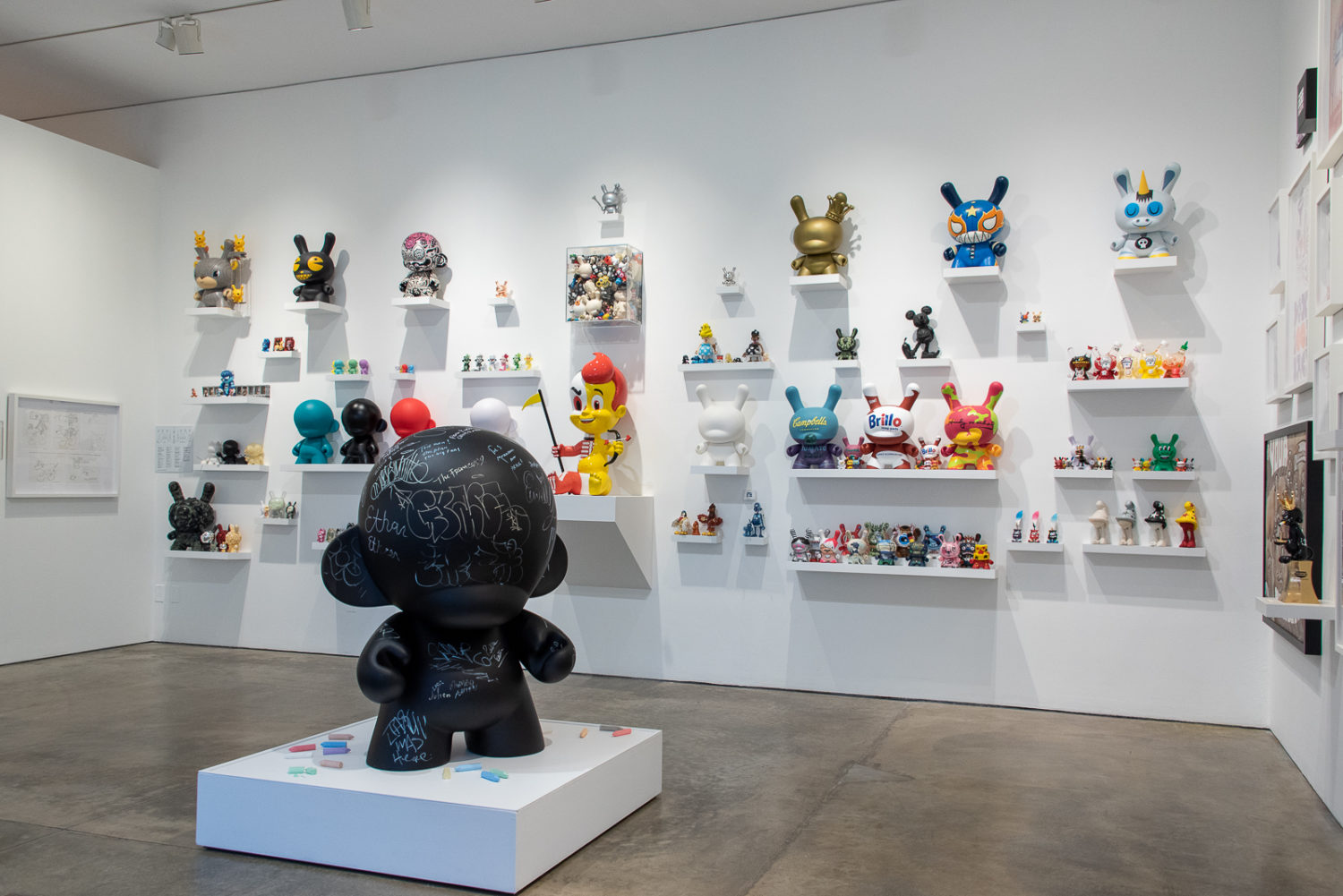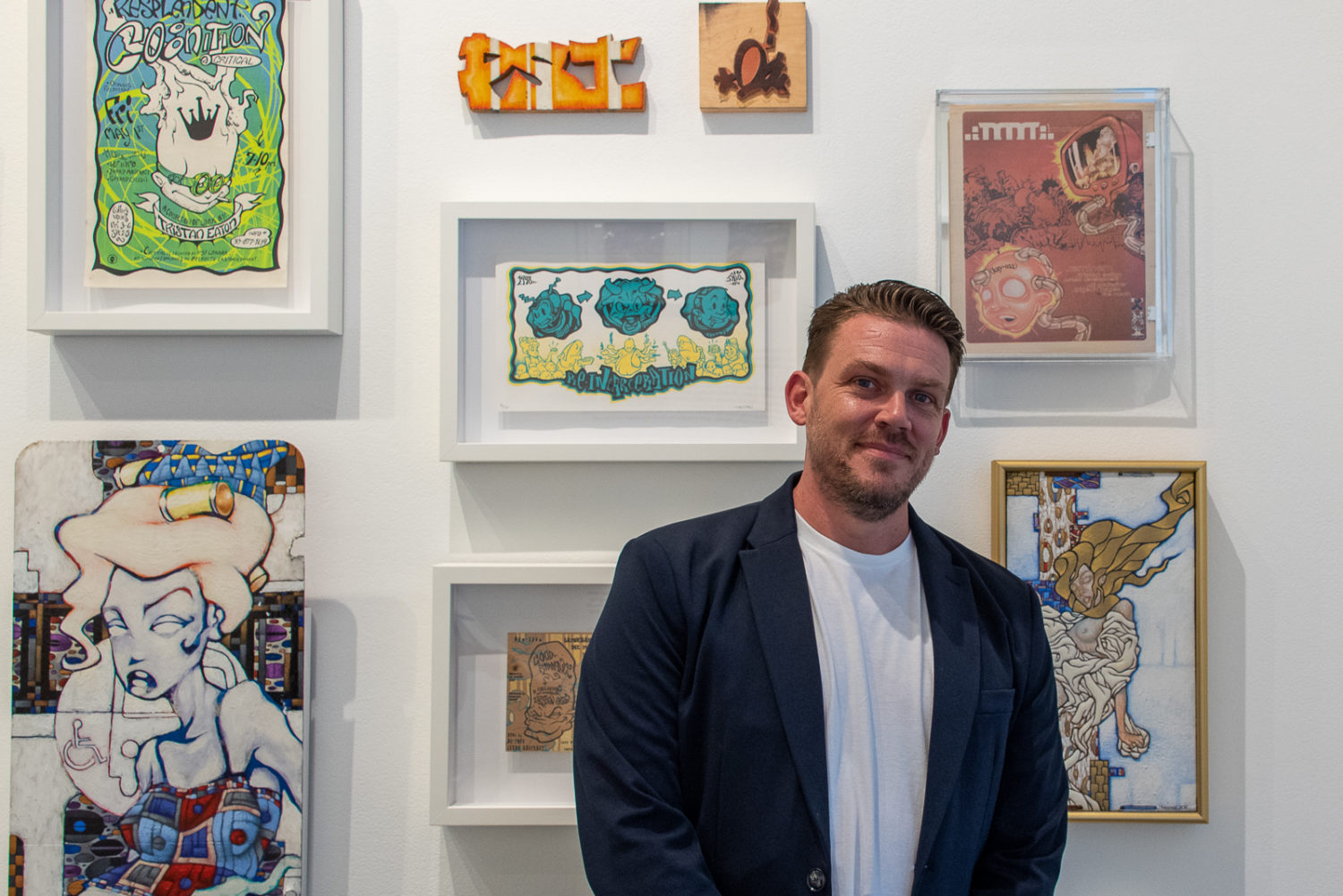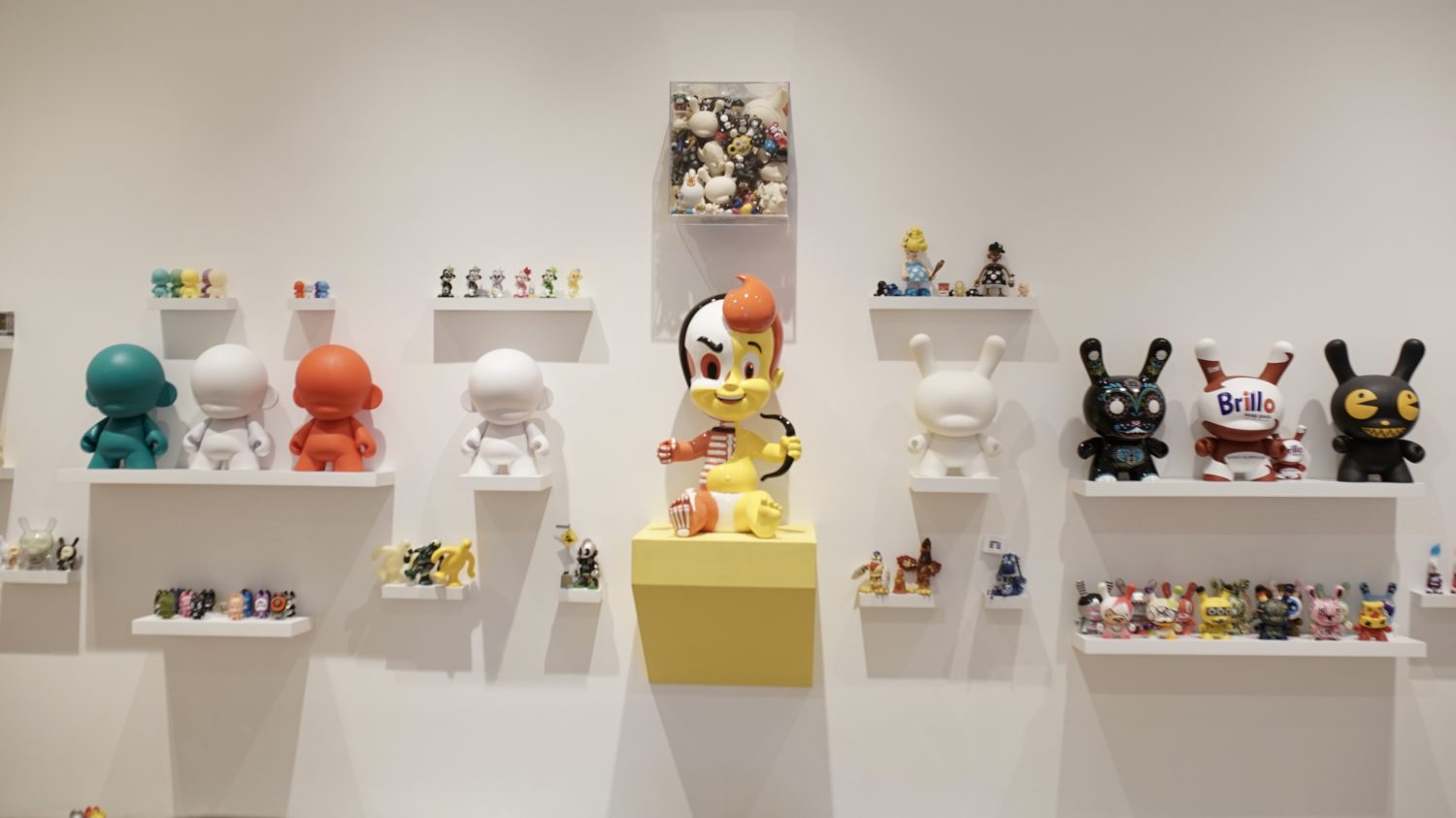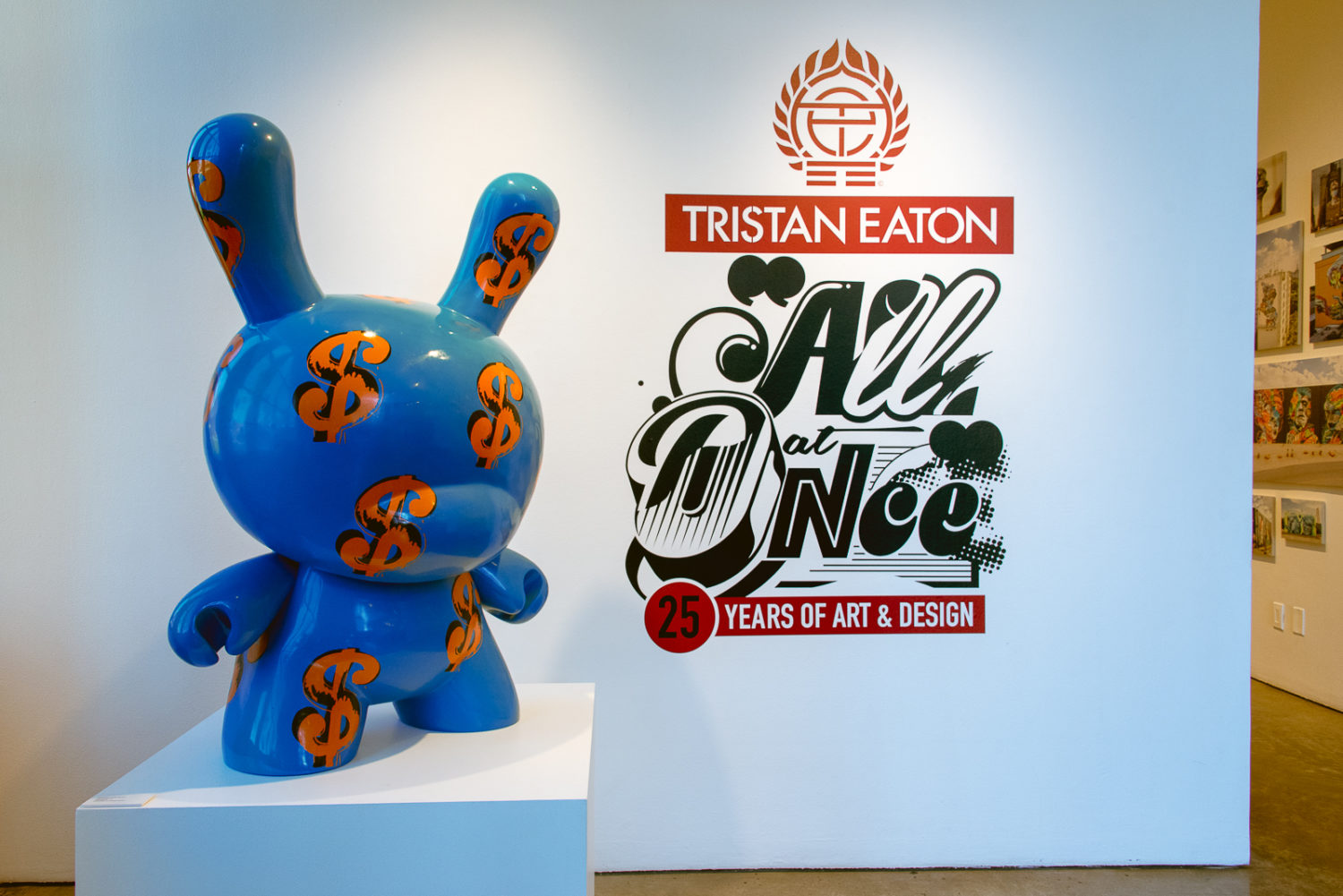“As hard as I’ve tried to focus on just doing good work, there’s always a part of you that wants to know how history will remember you,” says Tristan Eaton – the acclaimed artist and designer whose current 25-year survey exhibition at Long Beach Museum of Art covers literally more than half his life. “Getting this chance is a wild crazy luxury and an amazing gift.”
From the first toys he designed for Fisher-Price at just 18 – in serious child prodigy territory – to co-founding the Munny/Dunny KidRobot empire and Thundercat Studios, his prolific street art alter-ego with TrustoCorp, his unique relationships with Marvel and Space-X, and his globe-trotting mural-making juggernauts, the impossibly exuberant, bright and crisp survey explores the active interplay between Eaton’s commercial accolades and his fine art ambitions.
“As an artist, you reinvent yourself all the time, over and over,” Eaton tells L.A. Weekly. “You work hard, innovate and keep learning. This show means a lot to me, of course – 25 years of work in one place! But it’s not quite a retrospective in that it’s not all serious painting, but rather it’s my journey of getting to be a serious painter.”
Through a beguiling site-specific mural wall requiring 3D glasses for proper viewing, like some kind of analog AR, and a room dedicated to samples from some of his most popular mural projects, the viewer begins to understand the artist’s evolution. His amped-up pop-infused language splicing and recombining interpretive citations from comic, horror, headlines, advertising, music, art history and cinema comes into roaring focus. The operatic simultaneity of visual cues perfectly mirrors the post-internet zeitgeist, even as Eaton does more than mimic and assemble, but rather transforms and reimagines the pictographic shorthand of modern culture.
In the upstairs galleries, we finally get to meet Tristan Eaton the painter. A room of fine art paintings from 2013 to the present offers a perhaps unexpected moment of refinement and a notably gallery-like environment, in which large-scale paintings are given space to breathe and tell their stories. There’s no doubt the work is Eaton’s – its sliced and diced, clever and emotional expressivity and simultaneous holding of narrative and chaos is clearly born of the informational maelstrom of everything that came before. But at the same time, this work demonstrates a gravitas and a pared-down, one story at a time quality that is clearly anchored in the language of fine art painting. It’s not tame, Eaton will never be that, but it is… centered.
The transition from design to murals and serious fine art came through working with spray paint, freehand. “It was a surprise how exciting it was,” he says. When he realized that the key lay in the materials themselves, he says it was, “like a portal opened to another dimension. I did 100 murals in eight years. I felt like a whole person for the first time, all of me was there all at once for the first time. The magic of executing paintings with spray paint surprised me. I’d been bombing in the street and never expected spray paint to be the medium that would ultimately center in my studio work.” Looking back, it seems obvious, but he always had that idea, that voice going, “oh well, real art isn’t made of spray paint, that’s for the streets,” and the whole time the answer was just sitting there, he says. “A wall waiting to be broken through. I knew there was something to chase there, and I’ve been chasing it.”
But through all this success, Eaton never has and never will forget where he comes from – street art and collectibles. He likes the idea that Art Toys, even amid the rampant acquisitive culture, are more accessible than high-priced fine art. Even better, he says, is that murals are free. “There’s no price of entry for the viewer, there’s no secondary market, no flipping, reselling, or any of that,” he says. “I think it’s a little more pure in that way, and that’s part of why I love it so much. It’s truly for everyone, especially the people who live in the community with it. Even the Long Beach mayor came to the show and he told me how when he was growing up the only art he ever saw was street art. Bless that.”
It may seem strange to ask a man in the midst of a 25-year survey that includes all this plus collaborations with Marvel (where he’s one of an elite few who’ve been granted permission to riff on the characters) and Space-X where his art is literally headed out of this world about what comes next. But of course, he has an answer: sculpture. “I want to explore the possibilities of large-scale objects in public spaces,” he says. It’s a bit like seeing the toys at monumental scale, but with the energy of the studio and the big walls. An idea of what that could be like already lives on the museum’s grounds, in the form of a rather spectacular marine mammal made of reclaimed materials that greets museum visitors and gazes longingly toward the sea.
“I’m always surprised by what comes next,” Eaton says. “I started so young and I’ve never seen the total me like this before. If the 18-year-old me knew what I would be doing 25 years later, he would freak out. I just want to enjoy the ride.”
Long Beach Museum of Art, 2300 E Ocean Blvd., Long Beach; on view through October 3; $12; lbma.org.

